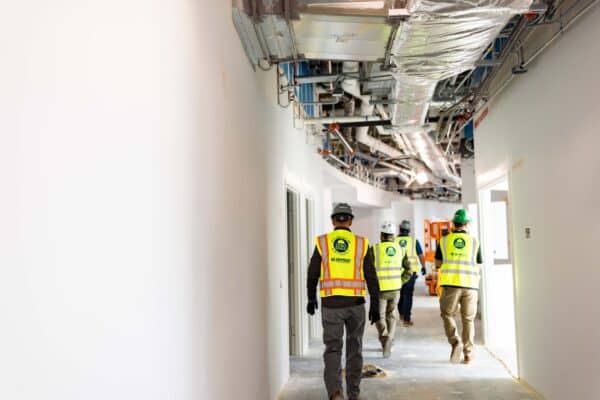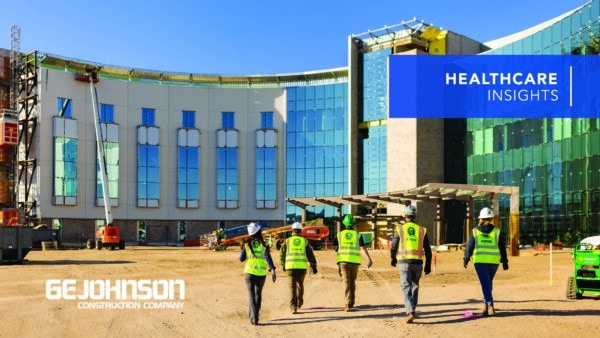Hospitals and health systems are facing an exceptionally turbulent period. According to Kaufman Hall, 2022 was the worst financial year for hospitals since the beginning of the pandemic, and about half of U.S. hospitals ended 2022 with negative profit margins.
Many factors influence this negative economic performance, including staffing shortages, pharmaceutical and supply cost escalation, and volume shifts to lower-reimbursement outpatient settings. While hospitals have been focused on managing pandemic-related issues, Big Retail has established a secure foothold in the primary care market. FierceHealthcare projects that retail could capture 30% of the primary care market by 2030, disrupting a critical pathway through which new patients engage with providers and systems for specialty and advanced care.
As competition and operating costs have escalated over the last three years, hospitals have tried to reduce costs, including costs of capital facility development and maintenance. However, many find there isn’t much left to cut after three years of drastic action.
REIMAGINING REAL ESTATE STRATEGIES
Persistent economic pressures necessitate new real estate strategies that can help systems manage cash and affect sustaining change. Owners are looking to the A/E/C community to evolve project delivery in lockstep with the realities presented by today’s healthcare market. Two themes, in particular, may reshape real estate delivery in the coming 3-5 years.
FOCUSING ON ADAPTATION, NOT DURABILITY
In the past, durability was a primary concern for health facilities. They were built to withstand intensive operating conditions above all else. In recent decades, flexibility has also taken center stage, ushering concepts such as acuity adaptable patient rooms, flexible clinic modules, and structural bay spacing that supports multiple care platforms. Unfortunately, in the wake of a 60% drop in ambulatory volumes, deferred non-emergent procedures, and desperate need for acute and intensive care beds, established durability and flexibility concepts did little to help providers tackle immediate problems. The pandemic and financial fallout since have glaringly highlighted the need for health facilities that adapt quickly and cost-effectively when (and not if) conditions change.
THE IMPERATIVE
The traditional circular facility strategy of design-construct-operate-renovate is increasingly unsustainable in the face of eroding margins and rising operating costs. Adaptation builds on flexibility by exploring how individual rooms, functional departments, and whole facilities can serve evolving clinical needs while minimizing capital expenditures.
Developing an adaptive health facility begins with a two-part action plan:
- Capital project teams must embrace the pace of change inherent to care delivery, working under the presumption that functional requirements may drastically change within 3-5 years.
- Teams must develop and implement strategies that allow facilities to adapt to changing demands without requiring a lengthy and costly reconfiguration.
Teams should ask questions such as, “How can this space be used for three alternate functions with little to no revision?” and, “Can this facility support related or unrelated clinical delivery if the need arises?”
IMPLICATIONS
Adaptive planning requires an integrated team of strategic, clinical, design, and construction professionals to envision realistic scenarios, determine viable solutions, and defend those solutions throughout a capital project development. Teams must think beyond “hardening” and “upsizing” towards creative smart-sized and modular MEP, shell and core, and interior facility approaches that support multiple clinical needs.
Adaptive planning turns conventional thinking 180 degrees from “Can we afford to be flexible?” to “Can we afford NOT to be flexible?”. A successful strategy will elongate the life of a facility, maximize initial investments, and reduce downtime for costly renovations.

ACHIEVING CLARITY IN CONTEXT
While defining healthcare capital project requirements has always been a balance of art and science, current market dynamics make the process vastly more complex. A competitive landscape primarily consisting of health systems is now crowded with national retailers, payers, big tech firms, venture capitalists, and startups, each of whom intensifies competition, opens opportunities, or both. Systems often find themselves in a rapid decision analysis cycle where external forces push and pull service volumes, space needs, and resultant project scopes. That is the context in which discreet capital projects somehow must be defined, locked, and advanced. Given that, many traditional A/E/C delivery methods with systematic, linear delivery processes are counter-productive to today’s realities. Providers are seeking A/E/C partners who can approach project analysis and implementation in a competitive macro landscape rather than a single site of care.
THE IMPERATIVE
The field of healthcare technology, disruptors, and competitors is expanding so quickly that capital project requirements (program, cost, schedule) are often out of date within weeks or months. Contextual thinking recognizes that discrete healthcare projects (a new building, expansion, renovation, etc.) play into a larger picture of digital, retail, and partnership strategies that carry ramifications for the project.
A practical approach to context-based projects rests on three principles:
- Capital project teams are engaged early and equipped with flexible tools that support rapid (days, not weeks) options analysis.
- The team fosters a mindset of flexibility; the correct answer may be to scale back or defer a project.
- The team can define the project controls (early commitments, approvals, cash flows, contracting mechanisms) necessary to beat evolving schedules and cost targets.
IMPLICATIONS
Despite more significant front-end investments, contextual thinking can result in responsive, grounded outcomes and a better alignment with market realities. A context-based approach emphasizes conviction and flexibility. By considering many scenarios, the client and project team fortifies the project rationale within a larger strategic context. If conditions change, the team is ready to respond by defining the ramifications and controls required to keep the project on track.

SHIFTING THE OUTLOOK
Hospitals and health systems face an array of rising cost structures, new competitors, and a faster pace of change. Real estate solutions must create sustaining value by adapting to evolving programmatic needs and a widening field of competitors, partners, and opportunities.
While this context presents a steep learning curve to the A/E/C industry, many players are laying the groundwork to confront industry challenges through innovative pricing, teaming, off-site manufacturing, and management strategies. Capital delivery teams that embrace the pace of evolution of the healthcare industry will drive long-term value while delivering facilities that respond to tomorrow’s challenges.
For more information please visit our website GEJohnson.com


